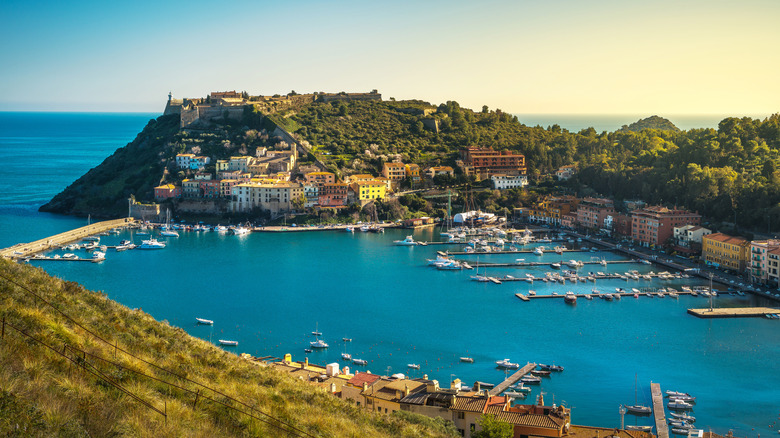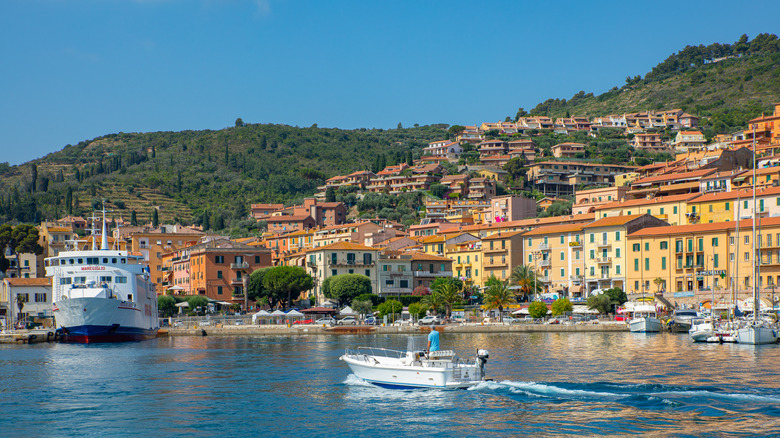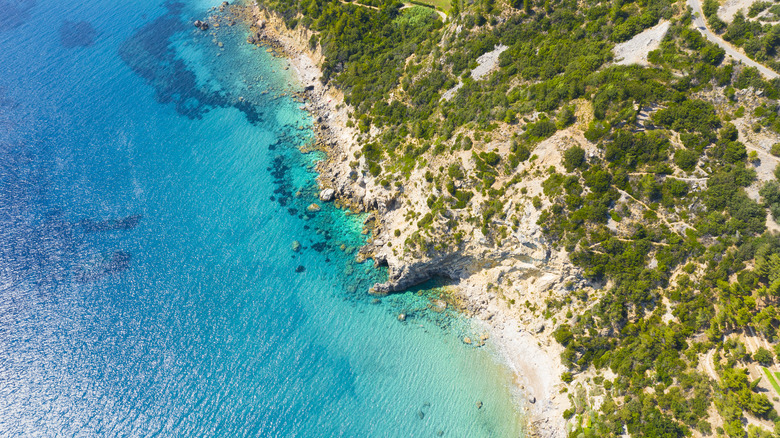Avoid Big Crowds At Italy's Under-The-Radar Coastal Gem With Vibrant Views And Beaches
Close your eyes and imagine a vacation in Tuscany. What do you see? Maybe you're sipping a glass of wine before entering the Uffizi Gallery in Florence. Or perhaps you're snapping a picture of yourself holding up the Leaning Tower of Pisa. There's Cortona, the city on the hill, and the wonderful square in Siena. Tuscany is a gorgeous place, but maybe you've done these places already. What if we told you about an under-the-radar coastal spot in Tuscany that you might not know about? This scenic place is the peninsula of Monte Argentario. It sits just about 100 miles from the center of Rome and is connected to the mainland by three isthmuses, though it was once an island.
Monte Argentario has been inhabited since at least the third century B.C.E. by the Etruscans, who were the dominant population before the Romans rose to prominence. It's been ruled by the Romans, then Naples, Spain, and then became the Tuscan Duchy. The famous painter Caravaggio either died here or his body ended up here, but either way, Monte Argentario was the spot where he was buried.
There is plenty to do here, including beaches to lounge on, farmer's markets, boating, ferries to nearby islands, and some incredible views. Whether you visit Porto San Stefano or Porto Ercole (the main towns on the peninsula), or just spend your time hiking and lounging on the sand, Monte Argentario is the perfect destination.
Visiting Porto San Stefano
While you likely won't have crowds for most of the year, Monte Argentario is a popular destination for Romans during July and August. Porto San Stefano is the largest town on the peninsula, and has lots of restaurants, shopping, and cafes. It's also the site of a regatta in August, and has a large marina for yachts where you can hire boats to take you around the area to some of the beaches that aren't accessible by other means. While you're there, visit Fortezza Spagnola, a Spanish fortress built during the end of the 16th century and the beginning of the 17th century. Inside, you'll find exhibitions that talk about the area's history.
To get a view of a lot of the area, take a drive around the peninsula on the Via Panoramica, which circles it. (You can drive in on one of the isthmuses.) You can also get a ferry to the other islands in the area, like Giglio and Giannutri, which takes about 50 minutes each. (Tuscany has a number of breathtaking islands.) On Giglio, make sure to visit Giglio Castello to try their Ansonaco or Ansonico wine, which is only produced there. On the subject of locally produced deliciousness, visit the Antica Fattoria La Parrina, a farmer's market with veggies, fruit, local wine, and cheese. Of course, no visit to Tuscany would be complete without trying some wild boar and the local seafood.
Porto Ercole and the beaches
There are plenty of beaches — 20, in fact — with some that require a bit of a hike. La Feniglia beach on one of the isthmuses is said to be the place where Caravaggio washed up after his death in 1610. La Feniglia is just over six miles long, and you can only get there by walking or biking. You can also take a steep hike down a hill for about 20 minutes to Cala del Gesso beach, which is fantastic if you're a fan of snorkeling. Other beaches in the area are i Bagni di Domiziano and La Giannella. It's hard to find one that isn't pretty.
The other major village is Porto Ercole, where Caravaggio was buried and has a dedicated plaque. If you want to do a bit of hiking, there are a lot of trails, including the hike up to il Telegrafo at about .4 miles high. If the weather is clear, you might even be able to catch a view of Corsica. There is also another 16th-century Spanish fort to visit in Porto Ercole, called Forte Stella.
Pirate fans should visit Porto Ercole in early May for the "Night of the Pirates" or "La Notte dei Pirati." The whole village turns into a pirate stronghold with decorations and costumes. There is a treasure hunt and a costume contest, as well as a recreation of the 1544 Corsair Barbarossa attack on the area, called the "Conquest of Porto Ercole."


